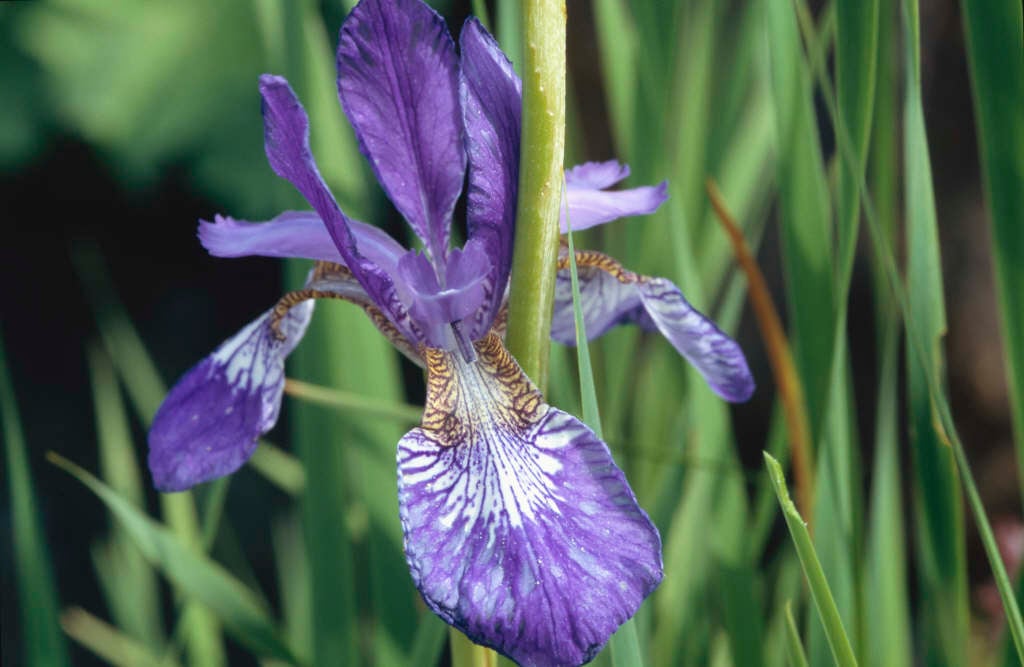Iris sanguinea
blood-red iris
A rhizomatous perennial to 90cm tall, with long, erect, narrow leaves and unbranched stems bearing 2-3 reddish-purple flowers 6-8cm wide in early summer, the falls with yellowish-orange hafts
Synonyms
Iris sieboldiiIris orientalis Thunb.
see moreIris sibirica var. orientalis
Iris nertschinskia
Iris thunbergii

Size
Ultimate height
0.5–1 metresTime to ultimate height
2–5 yearsUltimate spread
0.1–0.5 metresGrowing conditions
Moisture
Well–drainedpH
Acid, NeutralColour & scent
| Stem | Flower | Foliage | Fruit | |
| Spring | Green | |||
|---|---|---|---|---|
| Summer | Purple | Green | ||
| Autumn | ||||
| Winter |
Position
- Full sun
- Partial shade
Aspect
South–facing or West–facing or East–facing
Exposure
Exposed or Sheltered Hardiness
H6Botanical details
- Family
- Iridaceae
- Native to GB / Ireland
- No
- Foliage
- Deciduous
- Habit
- Columnar upright
- Potentially harmful
- Harmful if eaten. Wear gloves and other protective equipment when handling. Pets: Harmful if eaten. For further information and contact numbers regarding pets, see the HTA guide to potentially harmful plants
- Genus
Iris may be rhizomatous or bulbous perennials, with narrow leaves and erect stems bearing flowers with 3 large spreading or pendent fall petals, alternating with 3 erect, often smaller, standard petals, in late winter, spring or early summer
- Name status
Correct
- Plant range
- S. Siberia to Japan
How to grow
Cultivation
Grow in a well-drained, neutral to acid loam in full sun or partial shade
Propagation
Propagate by seed sown in a cold frame in autumn or spring. Lift rhizomes and plant immediately in the flowering site from midsummer to early autumn
Suggested planting locations and garden types
- Cottage and informal garden
- City and courtyard gardens
- Coastal
- Flower borders and beds
Pruning
No pruning required
Pests
Diseases
May be susceptible to aphid-borne viruses, bacterial soft rot and grey moulds; see Iris diseases
Get involved
The Royal Horticultural Society is the UK’s leading gardening charity. We aim to enrich everyone’s life through plants, and make the UK a greener and more beautiful place.